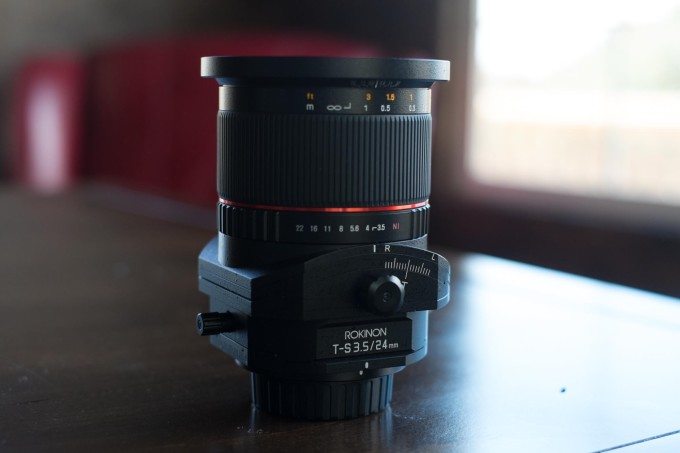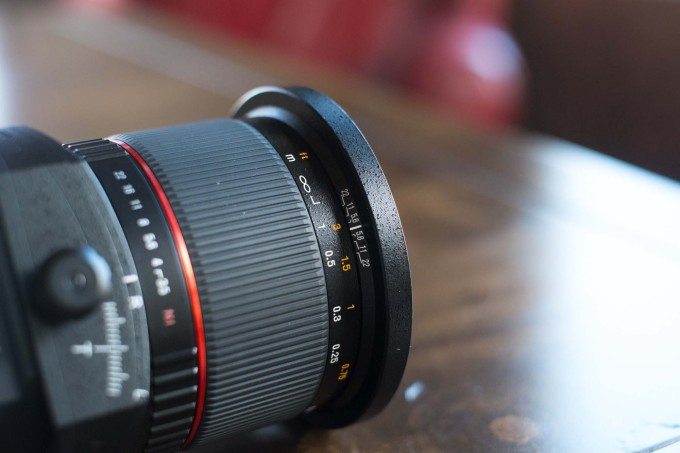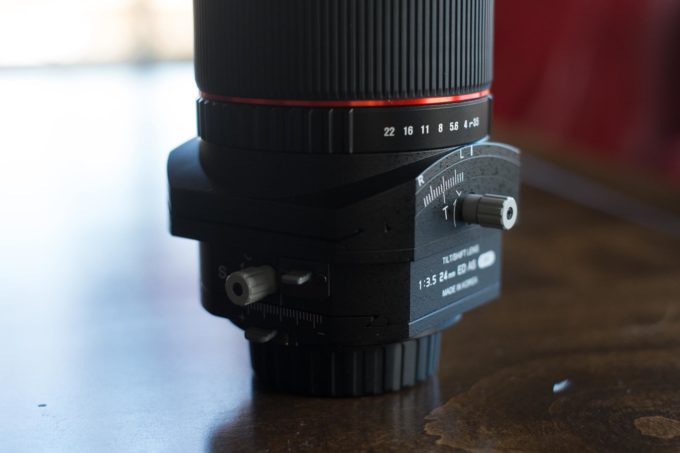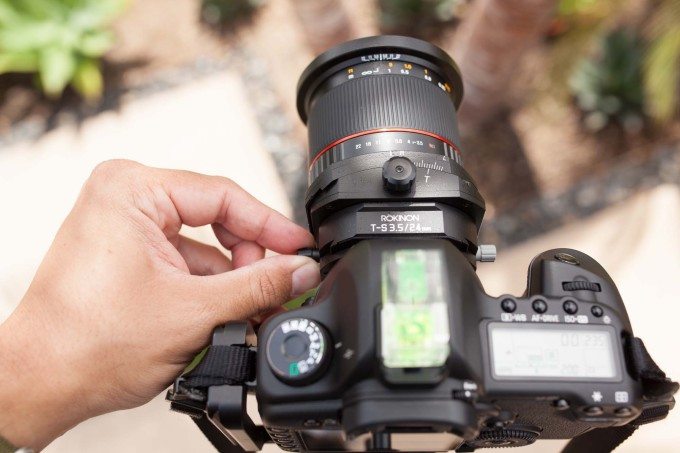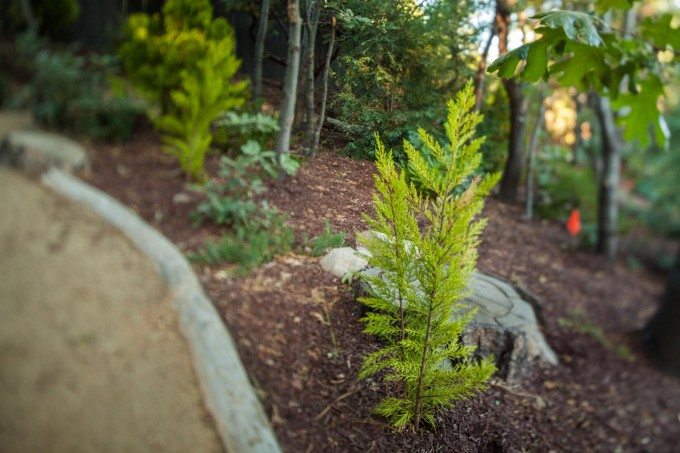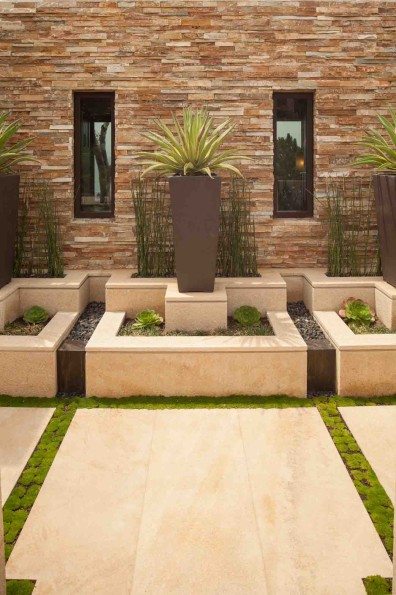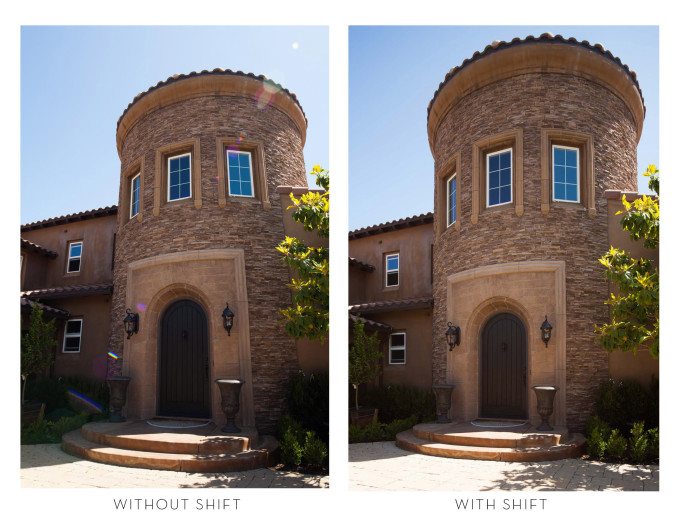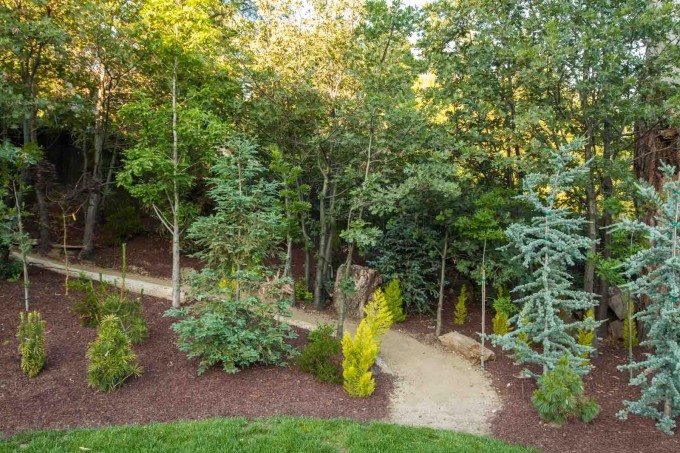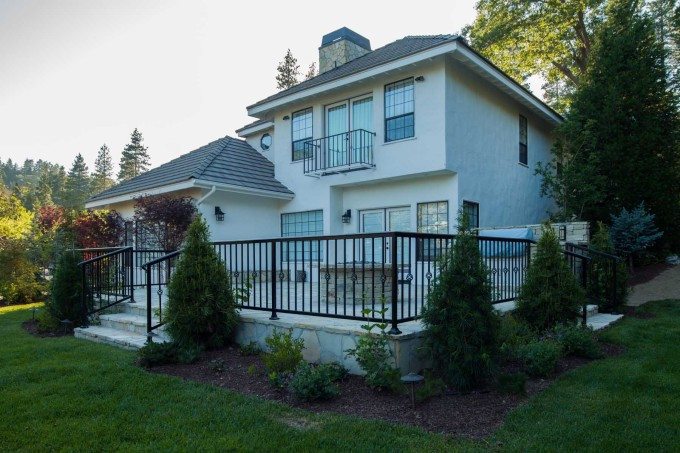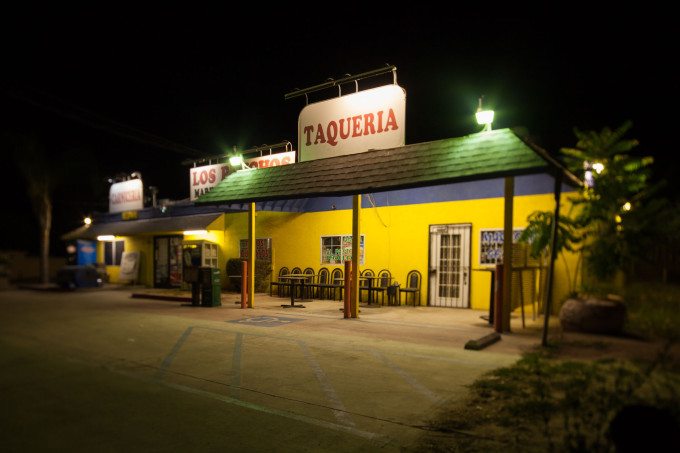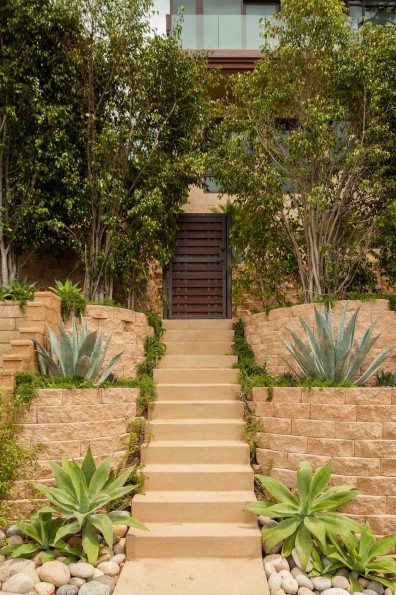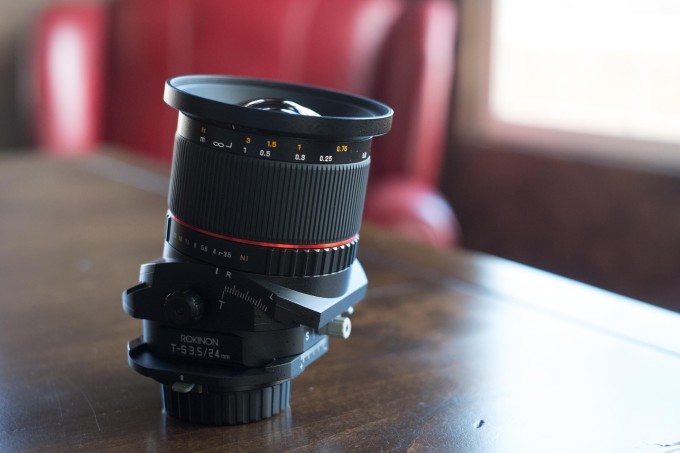
Rokinon is on fire lately. The Korean lens manufacturer has been producing a litany of quality manual focus prime lenses for the enthusiast and professional photographer at reasonable price-points. Continuing in this trend of quality primes, they have produced a first for any third-party lensmaker–a tilt shift lens. The Rokinon Tilt-Shift 24mm f3.5 ED AS UMC (24mm TS for short) is a first of its kind in the third-party lens world, providing access to this type of lens to many who normally couldn’t afford such a specialty optic. I had a chance to spend a short amount of time with the lens and use it on a couple of architectural shoots, and these are my impressions and review. This will be a little more technical than my usual lens reviews, but I will try to keep it as user-friendly as possible. Head on past the break for the review.
Pros & Cons
Pros
- Great price point for this type of lens
- Image quality is solid from f5.6 onwards
- Great range of movements for correcting perspective distortion
Cons
- Adjustment knobs are way smaller than I would like
- Extensive use of plastics makes me wonder about long-term reliability
- Extreme shifts show noticeable degradation of image quality (though this really shouldn’t be a surprise)
Gear Used
For this review, Rokinon only had a Nikon mount version on hand, so I had to use a lens adapter to use it with my Canon 5D Mark II; however, thanks to the lens being all mechanical, there was no trouble in using a simple mount adapter for this review.
- Rokinon Tilt-Shift 24mm f3.5 ED AS UMC – Nikon (Canon version also available)
- Canon EOS 5D Mark II (Discontinued – Replaced by 5D Mark III)
- Cinevate Nikon to EF adapter
Tech Specs
Copied from Adorama’s Product Page
| Focal Length | 24mm Comparable APS-C 1.6x Focal Length: 38.4 mm |
| Aperture | Maximum: f/3.5 Minimum: f/22 |
| Camera Mount Type | Canon EF |
| Format Compatibility | 35mm Film / Full-Frame Digital Sensor Canon (APS-C) |
| Angle of View | 83.5deg. APS-C Picture Angle: 56.9deg. |
| Tilt/Shift | Tilt ± 8.5deg. Shifts ± 12mm |
| Minimum Focus Distance | 7.87″ (19.98cm) |
| Groups/Elements | 11/16 |
| Image Stabilization | No |
| Autofocus | No |
| Tripod Collar | Noc |
| Filter Thread | Front: 82mm |
| Dimensions (DxL) | 3.39×4.45″ (8.61×11.30cm) |
Ergonomics
The Rokinon is an all manual lens meaning both manual focus AND manual aperture. Here we can see both the Tilt and Shift adjustment knobs and the manual aperture ring (directly underneath the red ring). The top of the lens flares out to support the 82mm filter thread, but the front element does bulge out a bit which makes this lens susceptible to flare if the light source is in your frame.
Right on top they also have a functional depth of field scale with all the proper distance markings on the barrel to make it useful. They have also given the lens a nice wide focusing ring which is very much appreciated.
Opposite to the adjustment knobs for the Tilt and Shift movements are grey locking knobs which is handy for identifying which one you’re adjusting. You can also see the lock levers for the independent rotation of the Tilt and Shift functions.
Despite being well made, I just wish the knobs weren’t so stinkin’ small, it really makes it frustrating to adjust the movements when you’ve got big hands like mine. Canon’s TS-E lenses have far superior adjustment knobs and I have to wonder if it would be possible to just swap these out for different ones?
Build Quality
When I first took the lens out of the box and had it in my hands, I got the impression that this was a well made lens, despite the extensive use of plastic. Now, don’t take the last part of that sentence as a too much of a negative (despite having listed it as a con), most lenses these days are made with modern plastics as they are lighter in weight and arguably easier to manufacture.
My concern lies with the fact that being a tilt-shift lens, more stress will be applied to these plastics as the body of the lens bends at the command of the photographer. Only time will tell, and I don’t have too much of a reason to be concerned, but I just had it as a footnote in the back of my mind.
Other than that, I was very pleased to find this lens to be well constructed and tightly assembled. I would have liked to have seen larger knobs for the shift adjustment, as the little tiny ones being presently used are a little hard to manipulate if you’ve got big hands like I do. Thankfully I don’t have sausage-fingers, so it was certainly manageable. I didn’t try dropping the lens or anything silly like that, but overall I think it is a well made product at a very reasonable asking price for what you’re ultimately getting.
Focusing
As with almost all Rokinon lenses, the 24mm TS is a manual focus, manual aperture lens (they do make some Nikon-mount lenses with auto aperture abilities), and as such, you had better have fantastic eyesight, or use live-view on your camera to focus this lens properly. That being said, Rokinon saw fit to include a nice BIG manual focus ring on pretty much all of their lenses which makes things so much easier than trying to fiddle with some of the tiny focusing rings that are only suitable for being used by one’s fingernails. The focusing “feel” of the lens is well damped and far better than what you would find on today’s AF lenses, but not quite as smooth as my personal favorites, the Zeiss ZE/ZF series. The reason I suggest using Live-View on your DSLR boils down to the fact that once you start to apply adjustments like a major tilt or shift, or even both, the view through your viewfinder is going to become increasingly difficult to focus reliably.
Thankfully, Live-View on today’s cameras (and even yesterday’s like mine) makes working with such a lens an absolute breeze, provided you understand what you’re doing when you start to bend the focusing plane to your will. With a viewfinder like the 5D Mk III’s though, it can be easily focused manually–but it is still easer with Live View.
Ease of Use
In this review I won’t be diving into the nitty-gritty technical details of the Scheimplfug Principle, but I will break down the areas in which I found it to be the most successful / useful to me. In many areas of photography (architecture & landscape being two big ones) where lens movements will allow you to produce images that have a far more natural presence and without significant perspective distortion (think of standing at the base of a tall building and looking up, these lenses help to correct those converging lines).
Being familiar with lens movements (thanks to my background in Large Format photography) I wanted to find out how well the shift abilities were able to correct that nasty converging line problem that often plagues us architecture photographers. Happily I discovered that the movements are fluid, and easy to control (though as I previously mentioned, I would have liked to have seen slightly larger adjustment knobs as it would be easier to manipulate, a lot easier), and as long as I wasn’t doing an extreme movement in any particular direction, there was no real loss in image quality.
One thing to understand about Tilt-Shift lenses in general is that you really should be on a tripod, or some sort of support system, and if possible, shooting tethered to a laptop will allow you to get the best possible results as your focus will be extremely precise. That’s not to say that one cannot simply use the LCD on the back of their camera, but I’ve found that when shooting architecture particularly, I like to work off of a laptop so I can check every part of the frame critically before I even fire a frame. Another thing worth mentioning is that aside from the obvious benefits when shooting architecture, one can do some very creative effects with a Tilt-Shift lens, which sadly I didn’t really have enough time to dive into with my 1 week of use, but if you think about all of the Tilt-Shift apps you’ve seen on your iPhones or even something like a lensbaby, this lens (as well as other TS lenses) can produce these effects in-camera which means you will have a significantly higher quality result.
Image Quality
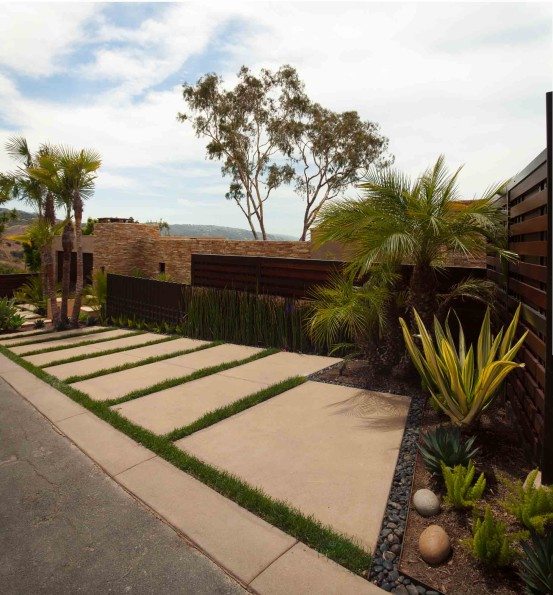
Many of the staffers here at The Phoblographer are big fans of Rokinon lenses, and for good reason too: they produce high quality manual focus optics for reasonable asking prices. Once again, Rokinon has managed to deliver a lens with impressive functionality and image quality for under $1k, and I was very, very eager to see what it could do in the short amount of time I had with the lens. Having previously owned some of Canon’s TS-E lenses in the past, I had high hopes but reasonable expectations of this lens. Did I expect it to surpass Canon’s $2200 24mm TS-E? No, of course not, but if it came even remotely close to the finest wide angle Canon has ever produced, then this is one heck of a bargain.
Bokeh
One of the great abilities of a tilt shift lens is being able to dramatically tilt the plane of focus to either narrow or increase the visible depth of field. This is what you will commonly see referred to as the “Tilt Shift Effect” but know that that terminology is actually incorrect, the selective focus has nothing to do with Shift, and only with Tilt. I found the bokeh overall to be “okay”. It is better than some wide angles I have seen, but it can get a bit busy at times. Overall it’s definitely serviceable.
Sharpness
I was impressed with the detail this lens produced stopped down, it’s very good between f5.6-8. When I shoot architecture, I often am at f8 on most lenses.With the 24 TS, however, I was seeing so much detail at f5.6 across the frame that in most cases I didn’t even need to stop down anymore. Wide open at f3.5 the lens is pretty average (I wouldn’t plan on using that often) however stopping down to f5.6 noticeably improved everything about the image quality. (As a side note, at f3.5 Canon’s 24mm TS-E is as sharp or sharper as the Rokinon is at any aperture, that’s what the extra $1200 gets you.)
Color Fringing
I found that this lens has Color Fringing (or CA “Chromatic Aberration”) very well controlled, and whatever did show up could be removed within Lightroom with a single click of the mouse. Even in high contrast scenarios I didn’t see any tell-tale signs of fringing in tree branches at one of the homes I was photographing.
Distortion
Now a lens like this is built to CORRECT distortion caused by less than ideal perspectives (we can’t all shoot from a cherry-picker 20-50 feet in the air all the time). So thankfully with the shift adjustments available on this lens it is quite simple to correct the converging lines of taller buildings or even normal rooms from a higher or lower angle than eye-level. Unfortunately, all is not roses as I found that the lens does suffer from noticeable barrel distortion. This is a correctable problem in most modern processing software (Lightroom 5 is our program of choice here at The Phoblographer) but please be aware that correcting distortion in software is a destructive process and will degrade your image quality in the end.
Color Rendering
I found the overall tone of the colors this lens produces to be a little on the flat side. They look pleasant, but need a little post-processing punch in the gut to really make them shine. I tend to prefer a slightly warmer tone to my images and happily this lens does produce colors on the slightly warmer side. Editing your color and contrast is fairly common practice for most of us, so I wouldn’t worry about it to much, feel free to edit your images as you see fit!
Extra Image Samples

Conclusions
So, here we have a new upstart in a rarefied field. I can think of two, and only two, brands that produce a 24mm Tilt-Shift lens as of this writing in 2013, and they of course would be Canon and Nikon. What this Rokinon has done is open the floodgates to the world of Perspective Control imagery for photographers that have otherwise avoided these magnificent lenses due to to the sheer cost of them. For instance, Canon’s mkII version of the 24mm f3.5L TS-E costs a whopping $2200, a full $1200 MORE than the Rokinon. When you consider what they have accomplished with their lens and delivered it for under $1k, I find that to be pretty astonishing personally. Also, for the first time, Sony, Olympus, and Pentax now have a tilt-shift option which should be cause for great rejoicing! I have to say though, I am slightly conflicted over this lens. I think that it is a great opportunity for photographers who are new to tilt-shift photography to get into it, and for those of us on a budget it allows us to have a pretty decent lens for the price of entry. However, having owned Canon’s TS-E lenses in the past, I know just how phenomenal they are, and it’s hard to substitute something that’s not quite as good when you’ve had the best. Then again, $1200 is a LOT of money to save.
Please Support The Phoblographer
We love to bring you guys the latest and greatest news and gear related stuff. However, we can’t keep doing that unless we have your continued support. If you would like to purchase any of the items mentioned, please do so by clicking our links first and then purchasing the items as we then get a small portion of the sale to help run the website. Also, please follow us on Facebook, Flickr and Twitter.


